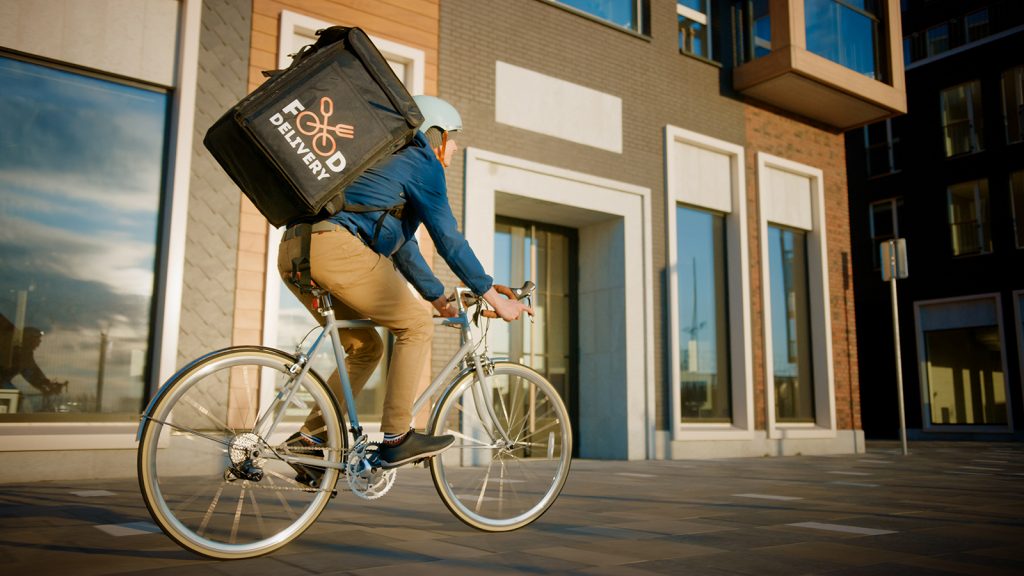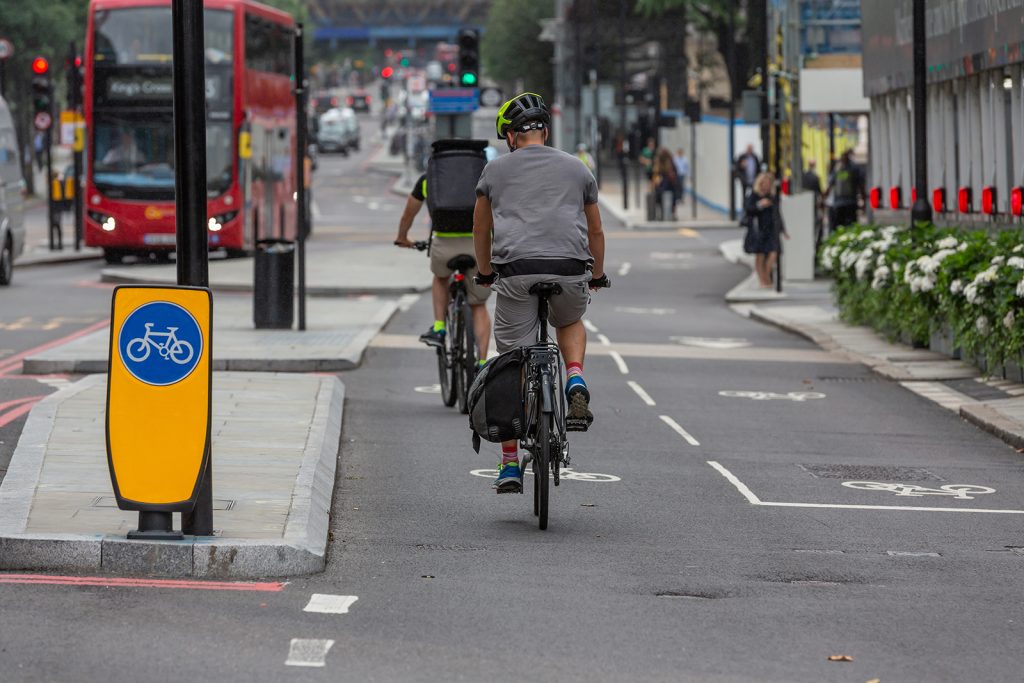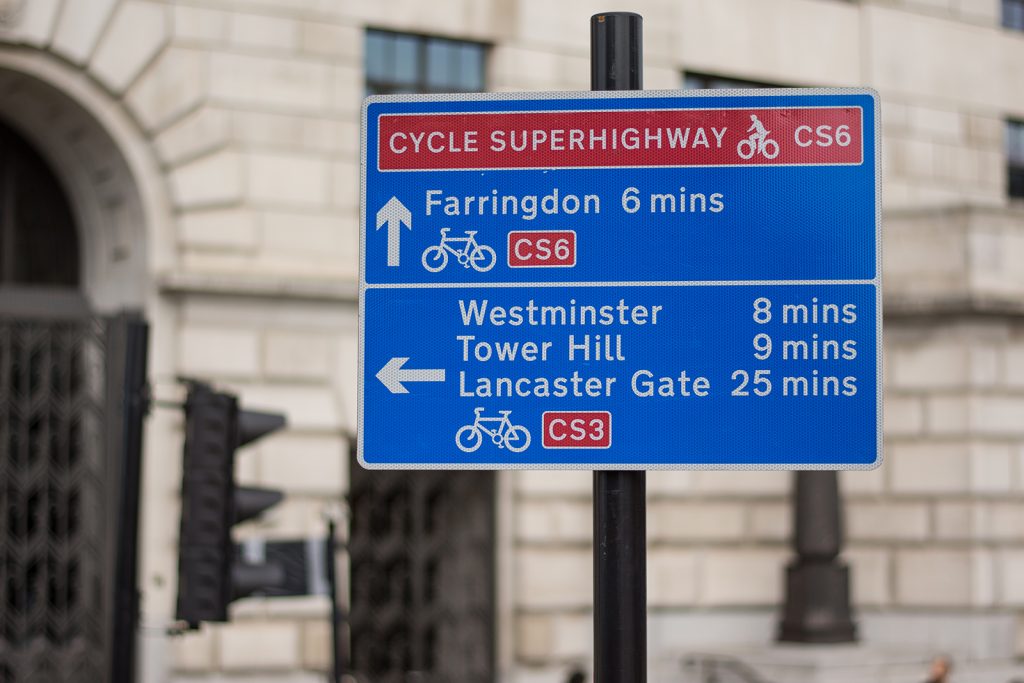The city councils of major cities are in the middle of a great leap forward in infrastructure so that we all see the benefits of cycling

There have always been thousands of motivated people in big cities who looked with envy at the way people travelled by bike in Amsterdam or Copenhagen … and who tried to do the same amidst the protests and honking of cars and buses in Madrid, Paris, and New York. Always. And, two decades ago, many city councils began to introduce small measures and routes so that there would be more motivated people and they would not risk their lives on the most congested urban arteries.
What is unprecedented is the transformation of infrastructure that is now being brought about by both the new cyclists, including riders, and the intensification of concerns and commitments to air quality and the sustainability of all large cities. Cities that are finding it increasingly hard to conceive of their transformation into smart cities without taking into account electric bikes and their integration into the main public transport centers so that people can combine them with the train, tram, metro and bus service.
In the most obvious cases, the difference between past and future has to do with the dramatic escalation of initiatives. And a good example of this are so-called cycle superhighways. According to an analysis by the consultancy Meep, Glasgow is one of the leading mid-sized cities with a plan to extend its protected cycling infrastructure to 400 kilometers, while Gdansk is developing 36.8 kilometers of such corridors while upgrading 30 kilometers of existing routes.

For its part, the analysis continues, Melbourne is a pioneer in “an innovative system of elevated bicycle highways” (Veloway) that prioritizes the safety and experience of users. Two of the focal points of these spaces are the increasing physical separation of cyclists from the rest of the road traffic and the commitment to usability throughout the year and at all hours of the day. Thus, Meep warns, the first sections already exist with protection against bad weather and intelligent lighting systems that prevent poor visibility.
Paris is also attracting a lot of attention. Mayor Anne Hidalgo has limited the speed limit throughout the city to 30 kilometers per hour and has announced that, by next year, the French capital will have 700 kilometers of cycle lanes and that, in the future and also under the umbrella of the Plan Velo, urban cycle tourism will be encouraged, children will be taught to ride in schools and infrastructures for recharging and repairing bicycles will be created in neighborhoods. Popular support is considerable if we take into account that 70% of Parisians do not own a car.
Vienna’s efforts are also noteworthy. The Austrian capital is adding new cycle paths every year to a network that already covers 1,600 kilometers and has turned it into the best city in the world for cyclists in the ranking of the consultancy Resonance. In parallel, Vienna is working on a cycle highway that connects the historic center with the vast green spaces of the Aspern Seestadt, a development project in the 22nd district that clearly favors cycling.

Emerging countries and technologies


The efforts being made by cities include those of emerging countries. According to the report by the ITDP consultancy, in Bogotá half of residents live near protected cycle paths, an increase of 10% since 2021. If, in 1998, the construction of an eight-kilometer network of pedestrian cycle paths began, more recently the Colombian capital “has expanded its cycling infrastructure and improved the quality of the lanes”, developing one of the most extensive networks in the world, with a total of 540 kilometers. More than 7% of trips in Bogotá are now made by bicycle, equivalent to 650,000 trips per day.
Santiago de Chile, with 26% of its population living near protected cycle paths, has been working for almost two decades on a complex cycling network that, once completed, could reach a length of 1,000 kilometers. The ITDP report also highlights “the redistribution of road space, the BikeSantiago bicycle-sharing program and the BMov Trici bicycle taxi initiative, “which are part of “a comprehensive approach that includes changes in policy, education and infrastructure development.”This huge deployment of infrastructure in emerging and advanced countries is taking place in parallel with the advent of smart cities and their new commitments to sustainability and air quality. As a result, in addition to talking about the Internet of Things, the “Internet of Bikes” (IoB) is now increasingly being mentioned in both academic and consultancy studies.

According to an analysis by consultancy Meep, “smart traffic signals are being tested to prioritize the movement of cyclists [on sensor-equipped bikes], reduce stop-start cycles and improve traffic flow at busy intersections.” In addition, it warns, “real-time route optimization systems provide cyclists with updates on congestion and roadworks, allowing them to choose the most efficient routes.”
Meanwhile, a multinational academic team led by Mennatullah Hendawy has found an interesting phenomenon in its analysis of Helsinki, Montreal, Moscow, Tokyo, Dublin, Boston and Vancouver. Electric and sensor-equipped bikes, the experts warn, “can also be used as mobile stations to collect data on air and noise pollution, temperature, atmospheric pressure and many other environmental variables.” In addition, they point out, bikes do not pollute in the same way as cars and, therefore, the data collected is not affected by the pollution generated by the measurement vehicles themselves.
However, despite the considerable progress in infrastructure, it is worth remembering that technology, even in the most bicycle-friendly cities in the world, is seen more as a tool than an end in itself. Thus, the expert from the University of Amsterdam, Anna Nikolaeva, has shown that, even in Amsterdam and Copenhagen, the smartification of cycling has more to do with certain local political priorities than with their comprehensive strategy as smart cities.
As Nikolaeva points out in a recent study, Copenhagen is promoting the use of bicycles as a measure, above all, to reduce the time that its residents spend on the road with their cars and to achieve sustainability goals such as becoming the first carbon-neutral city in 2025. Meanwhile, the expert continues, Amsterdam is betting on bicycle travel to mitigate “existing pressures on space and infrastructure.”
Whatever the case, the fact is that the expansion of bicycle travel seems increasingly unstoppable and that both the new physical infrastructures and the strong increase in cyclists and the use of the Internet of Things anticipate a historic transformation that, at least for the moment, is being led by European capitals.
Write: Gonzalo Toca